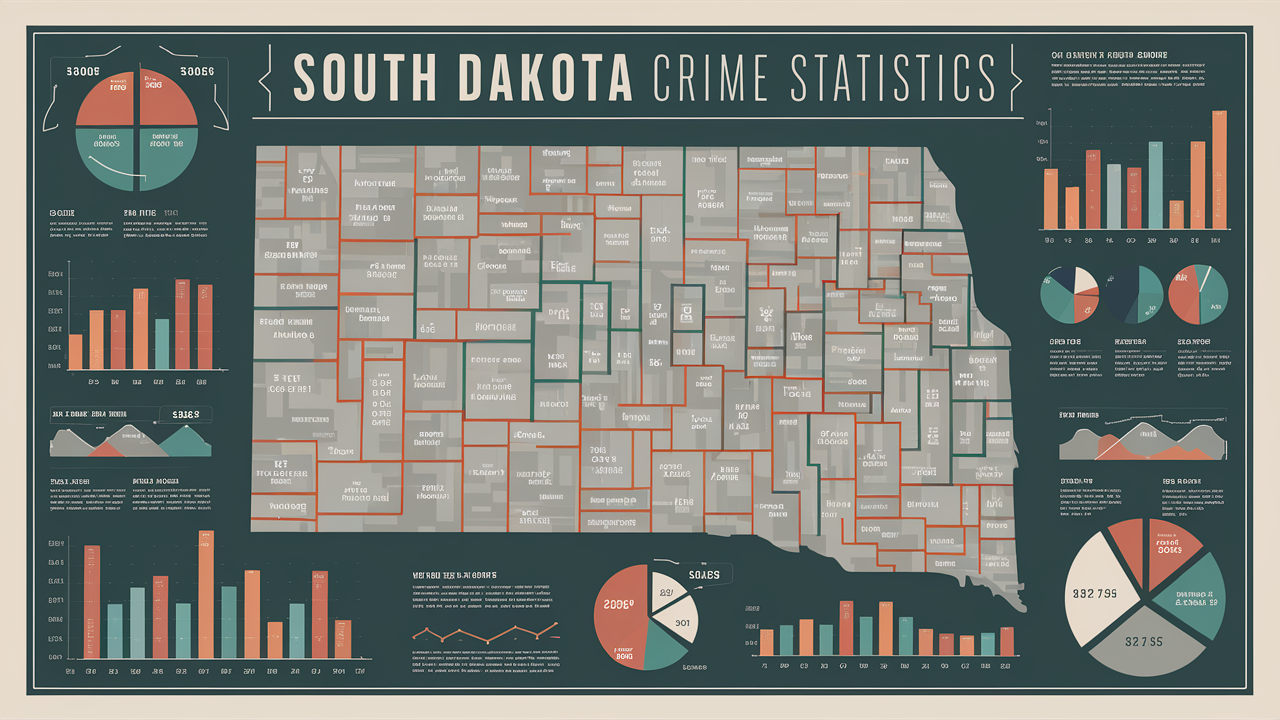South Dakota is ranked among the safest states in the United States of America with a low crime index as compared to America. Nonetheless, people in a state that experiences a low crime rate require information on the current rate of crime and other related trends. This helps people to gain an accurate perception of the safety threats as well as engage known authorities such as police and legislators in finding practical solutions. Now in this blog post, we will provide a brief discussion of the crime trends in South Dakota and the interpretation of the numbers.
Overall Crime Rate
Based on FBI records, the property crime rate in 2020 was 1969.2 per 100000 of the population while the violent crime rate was 398.9 per 100000. This comes to a crime rate of 2,368.1 per 100,000 people taken overall. As a result, the United States boasts 2,678 per 100 thousand total crime rates. And that would suggest that, overall, South Dakota's crime rate is more than 15% below the national rate.
Particularly about the average violent crime rate in the United States, the South Dakota rate seems to be noticeably lower concerning murders and robberies. Still, the frequency of serious assaults—above the national average in the United States—is high. Although South Dakota has less incidence of theft and burglary, the state boasts the highest rate of stolen cars. Still, several of the state's average individual crime rates are below those of other states in the US.
Crime Rate Trends
Examining the FBI crime data reveals that crime levels in South Dakota have been falling consistently for the past thirty years, similar to the rest of the United States. The violent crime rate rose to 523 in 1993 according to the number of incidents per 100000 residents. It has since dropped below the 23.5% mark as indicated in the following table. Violent crime also rose to 508 per 100,000 in 1991 and has decreased over 60% from this high. It is also important to point out that the overall crime rate per 100,000 people has declined by 13% in South Dakota from 2010 to 2020.
Thus, any crime can be dangerous and affect the overall perception of safety, but the data reveal that South Dakota demonstrates a gradual consistently positive trend in the crime rate over the last three decades. Recent trends indicate that its crime levels have been fairly static with an overall crime rate hovering between 2000 and 2500 incidents per 100,000 of the population for the last ten years.
Geographic Differences
It is also important to use data regarding crime rates in South Dakota, but it is also necessary to know that it can have differences depending on the region. Normally higher levels of crime tend to be associated with more urbanized parts of the state as compared to rural counties. For instance, Rapid City’s Pennington County had a 2020 crime rate of 5,108 incidents per 100,000 people. The rate of rape in the urban areas was the highest in the state while rural Haakon County had 305 per 100000 residents.
Indeed, 56 of the 66 counties in South Dakota reported less than 10 individual violent crimes collectively in the year 2020. It was also evident that just a few counties were responsible for a significant proportion of the crime rates in the state; Pennington, Minnehaha, Brown, and Meade were home to slightly over 60% of the populace, contributing to 60% of all reported crime incidents. This knowledge gives the South Dakotans an idea about the real safety concerns within the society of their region.
What's Behind the Trends
Reduced crime rates in South Dakota are consistent with the trends found across the United States as defined by community policing, increased and stiff sentencing laws, security technology, and diversifying demography. South Dakota may experience less amounts of crimes than other states because the population comprises aging people and the state has few areas that can be categorized as urban. However, comparing the crimes from year to year, some variations can be noticed because of the difference in reporting, the financial situation that affects property crime, changes in the number of police and their priorities, and others.
Criminologists also note that crime rates do not fully inform the picture of the safety and social well-being of communities. Other such as the rates of addiction, domestic violence, education, and employment opportunities are other important indicators of quality of life. People do not always report criminal incidents to the police, therefore, the overall occurrences are probably higher than what the FBI figures out. However, it is useful to have something to compare the current crime rates and use it to set goals for safety improvement.
In Closing
It is important to note that no state is safe from crime though knowing the latest statistics offers a true picture to the people of South Dakota. South Dakota crime rates are well below the national average and most years posterior to 1999, and overall violent crime rates are especially low compared to previous years in the state or to the rest of the country. However, there are always places that face more criminal concerns than the others. Using numerous aspects makes it possible to find the advantages while considering the difficulties that can be solved with collective effort in the future.


